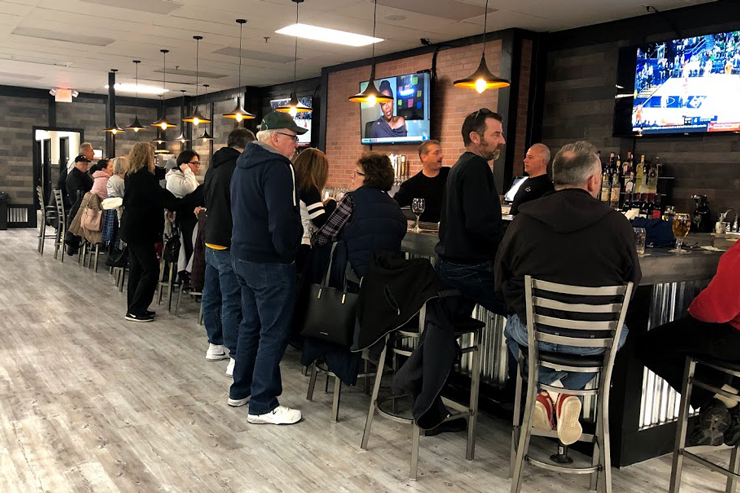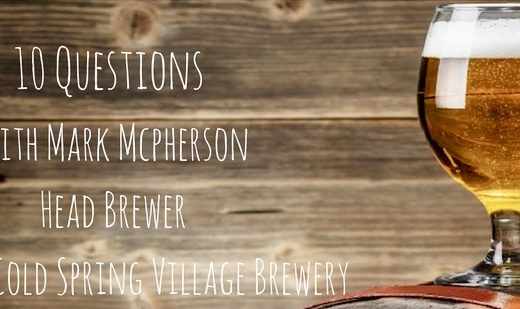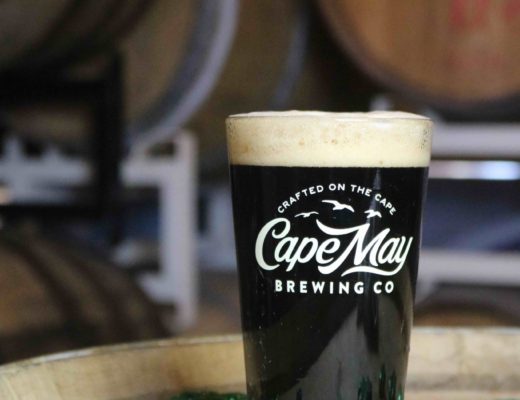What Makes a Great Brewery? Everyone will have different opinions on this depending on their own perspective, characteristics, past experiences, and personality-that is the beauty of craft beer, everyone gets something different out of it. In the next few articles I will give my personal perspective about what makes a great brewery. With these articles I do not speak on behalf of anyone else at South Jersey Beer Scene, the opinion is mine. These are the things that I am constantly thinking about as I further plan my endeavors into the brewery world. This week we won’t start with the expected topic – the beer. We’re actually going to take this in progression in the sequence in which you interact with a brewery, starting with the taproom.
Insert “Taprooms, remember those?” joke here. Having a taproom is by no means necessary to be considered a great brewery. There are many great breweries out there that have never and will never have a taproom available to visit. But thinking about my own personal experiences in craft beer, some of the best experiences I’ve had have usually been in a brewery taproom. And those experiences have helped elevate what I thought were good breweries, to great breweries. The taproom experience is all about setting the stage – how does the space create the right environment for drinking craft beer.
The Location
This starts well before you walk in. Where is the brewery located? Is it nestled among the mountains or tucked away in an industrial park? Is architecturally pleasing or a bland concrete and metal box? How accessible is it and is it convenient to get to? Is there good parking? These can all start to form your impression of the brewery experience. But location isn’t everything, and a difficult location can be overcome by other aspects of the experience. If the beer is incredible, customers will likely be willing to travel up to 2 hours to purchase it. If its not so great, customers might not even stop in on their way home from work.
The Space
Once you enter the door, what does the place feel like? Is it warm and inviting, cold and industrial, or some combination of the two you just aren’t sure about? Out of necessity, a lot of breweries are situated in industrial buildings, which by themselves are not very welcoming. Furthermore, they are generally all the same – concrete floors, high steel joist ceilings, steel columns. Could it equally pass as a brewery or a Home Depot? Has the brewery spent the time, money, thought, and attention to make it a more inviting place to drink their beer? Does it matter? I think it does.
Just because making beer can be an industrial, manufacturing process (it’s not always) does not mean that consuming beer should be. I personally can’t stand when little is done to give the brewery its own unique personality and character. I find this detracting to the overall impression of the brewery and gives me the sense that the brewery either didn’t care or cared and didn’t plan for it with enough importance. And it’s almost worse to me when it’s done in such a cookie-cutter brewery fashion. You know what I’m talking about. Wooden plank wall. Corrugated metal panel bar. Edison bulbs. Maybe you could get away with this a decade ago when breweries were less common, but not today. I must admit, I am a sucker for attractive and unique interior design and will give extra attention and love to a well-designed, well thought out, and well decorated taproom. The taproom should fit in with the larger context of the breweries story and branding. It should be as memorable as the beer itself. Can a brewery making excellent beer get by without an attractive taproom still be a great brewery? Absolutely. But in my opinion a brewery making good beer will never get to “great” without a well thought out and well executed taproom.
The Environment
Building off the physical space, the next thing a customer gets to examine is the overall environment of the taproom. Is the brewery taproom blaring loud music, showing 10 different things on various TVs, and creating a party like environment that may seem more fitting for your local bar? This plays into the age-old struggle of taprooms becoming more akin to just another neighborhood bar. This is especially relevant in New Jersey, where a lot is being done to discourage taprooms from becoming having just a sliver of the abilities of places with plenary retail consumption licenses. I may be of the minority, but I do not like to see TVs on in taprooms, or loud music blasting over the speakers, or even Quizzo and cornhole for that matter. I often end up finding this as a distraction that ends up taking away from the overall taproom experience. There are a lot of breweries that choose to do this and have created great spaces and opportunities for their community to get together. I am not knocking their decisions or the quality of their brewery. Hell, I may even end up having to bite my tongue and do some of it one day if it is what the customer wants and what is needed to pay the bills.
But with where I am at in my life, my primary purpose of visiting a brewery is to drink good beer. The secondary purpose is usually to connect, talk, and hang out with other people in an environment that is comfortable and accommodating (while drinking good beer). And the third purpose is to get a sense of what the brewery is all about – whether it is a company and brand that I will choose to support with my hard-earned dollars now and in the future. These three things alone are enough for me. I believe that great breweries create environments that focus customers in on their beer rather, than distract them from it. The taproom environment should serve as a platform for a brewery to enhance the beer drinking experience. I will caveat all of this with the fact that I do think breweries are a great place to help local artists and performers showcase their talents, within reason. When executed with proper thought and planning, this can add to the brewery experience. I also am a big supporter of breweries featuring food trucks for this same reason, as well as the more important general issue of customer safety. I hope we can get food trucks back at NJ breweries one day.

The Customers
Moving beyond the décor and general taproom environment, the next thing you are likely to encounter is fellow customers. As you walk to the bar to order, you look at who is visiting this brewery and are they the type of people that you want to be around. Is it a diverse crowd of beer lovers or some locals who just got done with their shift and are looking to unload on a few pints after a day of work? What is the age range like? Are there a lot of singles? Lots of families? Is the brewery a craft beer destination? A community gathering center? Or does it feel like just another local watering hole? Are the strangers here the type of people you would like to strike up a conversation with or would try to avoid at all cost? Do the other customers seem like the people you would choose to drink a beer with? Does it even matter? I think it very much does.
I personally believe this is an unrealized big part of the brewery experience and an early indication of what the brewery is all about. Although this could be largely out of the control of the brewery owners, I can make an argument that the type of customers the brewery attracts is a direct result of their approach to their beer, business, and what they want the brewery to be. There are decisions made in the planning and entrepreneurial process that will drive the customer base one way or another. Is the beer portfolio going to cater to a local, non-craft drinking crowd? Or is it going to be constructed to attract more regional craft beer fans? How much attention is paid to branding and advertising – what are the demographics that you are hoping to attract? The list goes on and on, but I believe breweries in fact are in control of the type of customers that are in their taproom and the overall brewery experience.
The Servers
Finally, you get to the bar and there is one more line of defense between you and your beer – the beer server. Good employees are a key to any great company, but this is especially true in the hospitality forward brewery industry. That first interaction with an employee may make or break the entire brewery experience. As you stare down the tap list and figure out what you want, you start to get some cues as to what type of people work here. Are they patient with you and genuinely interested in what you may order? When you ask a question about one or more beers, do they answer in excitement or give you a generic “yea, that one’s good.” I have had instances where servers at breweries have told me that they weren’t really beer drinkers – imagine that! Imagine the impression it made on me about the type of people the brewery is willing to hire. If you are willing to cut corners on hiring, what else are you willing to skimp on?
A good beer server will ask questions and try to help guide you towards something you like. If not, they should, because it is your satisfaction that is going to make you order another or come back another day. If they are genuinely passionate about craft beer and sharing the breweries unique brews with you, you will sense the effort. It’s always a fun observation when a brewery is rather slow, and nobody is ordering – what are the beer servers doing? Are they on their phone, texting away? Are they cleaning things down and prepping for a busy moment? Are they doing rounds and interacting with the customers, soliciting feedback, and striking up conversation? To me, these are some of the more telling moments. What I look for in a great brewery is employees that area as enthusiastic about craft beer as me in general, and even more so about the brewery they choose to work for. If you can find the right employees and continue to drive energy and excitement into them, you are probably doing enough things right to capture my attention and appreciation. I get this is putting a lot of pressure on front of house staff that is often difficult to find and keep. But in my book, this is an essential piece of the great brewery puzzle.
So, there you have it. It is a lot to take in and you may not agree with it, and that is OK. But I hope it causes you to think and reflect on your past experiences in breweries given the topics covered. I also hope it will cause you to think differently about your future visits to brewery taprooms, whenever we can get inside them again. Until then, get out there and support your local brewery by visiting their beer garden our other outdoor space. There is a lot of fun, creative things going on right now that we may never see again in the NJ brewery industry. Go enjoy them before they’re just another chapter in NJ beer history.



